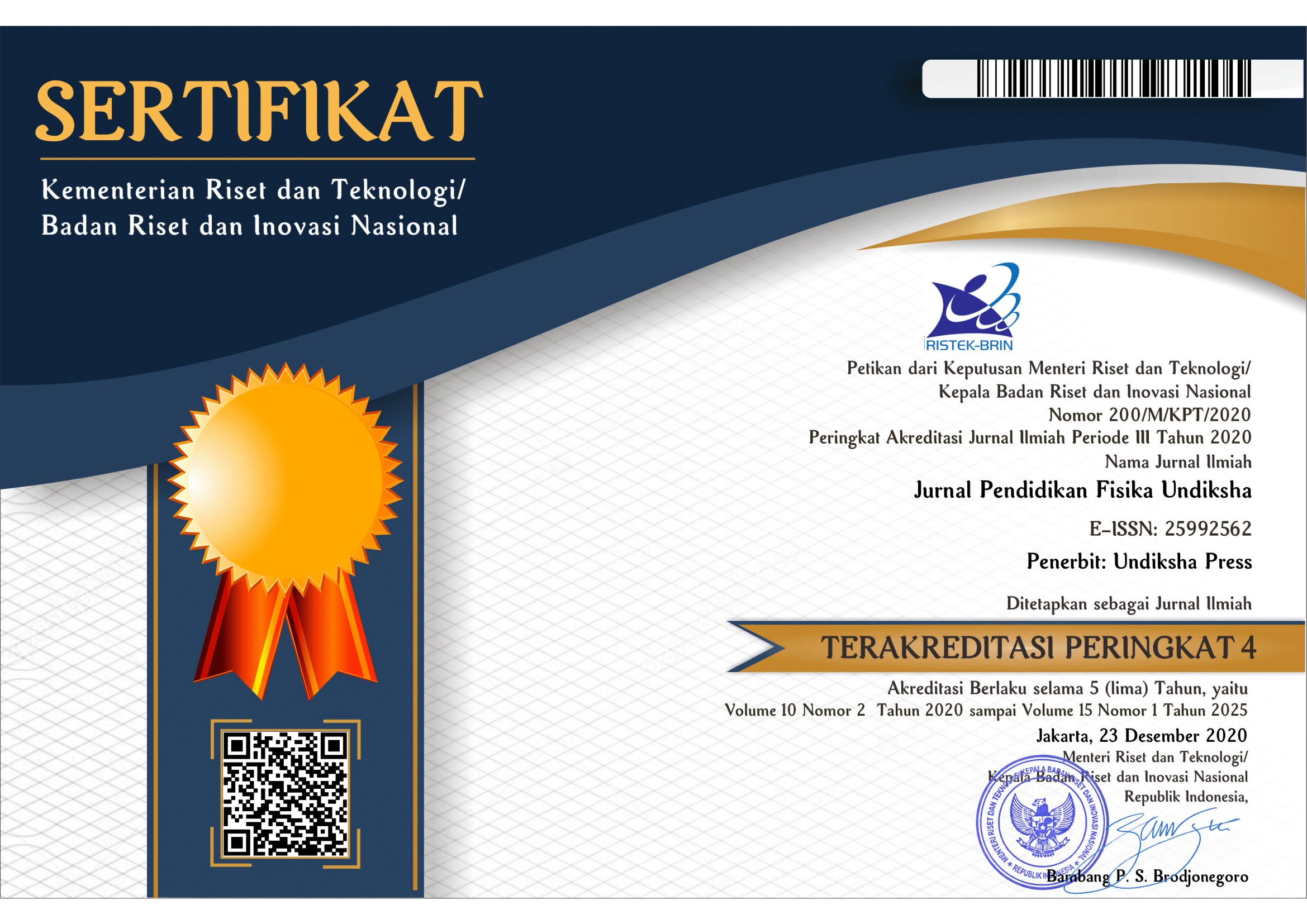PENGARUH MODEL BLENDED LEARNING TERHADAP PEMAHAMAN KONSEP FISIKA SISWA KELAS X SMA NEGERI 1 SUKASADA TAHUN PELAJARAN 2013/2014
DOI:
https://doi.org/10.23887/jjpf.v1i1.3277Abstract
Penelitian ini bertujuan menganalisis perbedaan pemahaman konsep fisika antara siswa yang belajar dengan menggunakan model blended learning (MBL) dan model pembelajaran konvensional (MPK). Jenis penelitian ini adalah penelitian eksperimen semu (quasi exsperiment) dengan rancangan non-equivalent pretest-posttest control group design. Populasi penelitian adalah seluruh kelas X SMA Negeri 1 Sukasada Tahun Pelajaran 2013/2014 yang berjumlah 6 kelas dengan anggota 122 orang. Sampel diambil dengan teknik simple random sampling. Sampel terdiri dari 4 kelas yaitu kelas X1 dan X4 sebagai kelas eksperimen dan kelas X2 dan X3 sebagai kelas kontrol dengan jumah 82 orang siswa. Data yang dikumpulkan dalam penelitian ini adalah pemahaman konsep fisika, yang diperoleh dengan tes pemahaman konsep fisika. Data dianalisis dengan analisis deskriptif dan ANAKOVA. Semua pengujian hipotesis dilakukan pada taraf signifikansi 5%. Hasil penelitian menunjukkan terdapat perbedaan pemahaman konsep fisika antara siswa yang belajar dengan MBL dan MPK (F = 146,155; p<0,05).Hasil uji LSD menunjukkan bahwa pemahaman konsep fisika siswa yang belajar dengan MBL lebih tinggi dibandingkan MPK (LSD =1,566; Δµ=10,408).Kata Kunci : model blended learning, model pembelajaran konvensional, pemahaman konsep
This research aimed at analyzin the difference of physics conceptual understanding between the students who learned by using Blended Learning and the student who learned by using conventional learning models. The type of this research was quasi experiment with non-equivalent pretest-posttest control group design. The research population were the students of grade X in senior high school 1 Sukasada in academic year 2013-2014 which consisted of 6 classes with 122 students. This research used simple random sampling technique which contained four classes: X1 and X4 as the experiment classes and X2 and X3 as the control classes, where the member of samples were 82 students. The data collected in this research were physics conceptual understanding data which were obtained by using physics conceptual understanding test. The data were analyzed descriptively and ANACOVA. All hypothesis tests were done at the 5 % significant level. The results shows that there is the difference of physics conceptual understanding between the students who learn by using MBL and the students who learn by usingMPK (F = 146,155; p<0.05). The result of LSD test shows that the physics conceptual understanding of students who learn with the MBL is higher than that of students who learn with the MPK (LSD = 1,566; = 10,408).
keyword : Blended Learning model, Conventional Learning model, conceptual understanding.
Published
2014-07-10
Issue
Section
Articles
License

Jurnal Pendidikan Fisika Undiksha is licensed under a Creative Commons Attribution-ShareAlike 4.0 International License.






